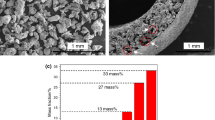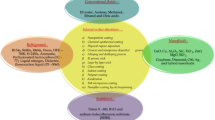Abstract
Ultra-thin flattened heat pipe (UTHP) is an effective solution to solve the problem of high-power density heat dissipation in narrow space. The key factors that determine its thermal performance include: the shapes and sizes of the UTHP, the wick structure, the type of working fluid and its filling ratio. The change in the filling ratio means not only a change in the amount of the working fluid, but also a change in the space distribution of the gas and liquid phases inside the heat pipe. Therefore, it is important to explore the effect of liquid filling ratio on the thermal performance of UTHP. It can provide effective guidance for the production of UTHP. In this work, experiments were conducted on four groups of UTHPs with different mesh wicks under a series of liquid filling ratios. The results demonstrate that the volume of the filling working fluid should account for 22%–37% of the total internal volume of the UTHP to avoid deterioration of heat transfer during the operation of the UTHP. In addition, a prediction model of the evaporator temperature has been established to provide guidance for the application of UTHPs.
Similar content being viewed by others
Abbreviations
- a :
-
half width of the interval
- d :
-
wire diameter/mm
- f w :
-
liquid filling ratio/%
- h :
-
height/mm
- k :
-
coverage factor
- L :
-
length of the heat pipe
- M :
-
mesh size/mm−1
- N :
-
mesh number/cm−1
- Q :
-
heat load/W
- R :
-
thermal resistance/K·W−1
- r :
-
radius/mm
- t :
-
thickness/mm
- T :
-
temperature/°C
- u :
-
uncertainty of the measurement
- V :
-
volume/mm3
- ε :
-
porosity/%
- λ :
-
height ratio of the vapor channel/%
- ψ :
-
rate of evaporator temperature rise/K·W−1
- a:
-
adiabatic section
- c:
-
condensing section
- e:
-
evaporating section
- f:
-
liquid fluid
- i:
-
inner
- input:
-
input
- max:
-
maximum
- min:
-
minimum
- o:
-
outer
- p:
-
pore
- s:
-
mesh wire
- v:
-
vapor
- w:
-
wick
References
Chen K., Chen Y., She Y., Construction of effective symmetrical air-cooled system for battery thermal management. Applied Thermal Engineering, 2020, 166: 114–679.
Jouhara H., Chauhan A., Nannou T., Heat pipe-based systems—Advances and applications. Energy, 2017, 128: 729–754.
Hong C., Huang Y., Integrated flat heat pipe with a porous network wick for high-heat-flux electronic devices. Experimental Thermal and Fluid Science: International Journal of Experimental Heat Transfer, Thermodynamics, and Fluid Mechanics, 2017, 85: 119–131.
Mcglen R., Jachuck R., Lin S., Integrated thermal management techniques for high power electronic devices. Applied Thermal Engineering, 2004, 24: 1143–1156.
Yang X., Yan Y., Mullen D., Recent developments of lightweight, high performance heat pipes. Applied Thermal Engineering, 2012, 33: 1–14.
Tang H., Tang Y., Wan Z., Review of applications and developments of ultra-thin micro heat pipes for electronic cooling. Applied Energy, 2018, 223: 383–400.
Chen X., Ye H., Fan X., A review of small heat pipes for electronics. Applied Thermal Engineering, 2016, 96: 1–17.
Li Y., Zhou W., He J., Thermal performance of ultra-thin flattened heat pipes with composite wick structure. Applied Thermal Engineering, 2016, 102: 487–499.
Li J., Lv L., Zhou G., An ultra-thin miniature loop heat pipe cooler for mobile electronics. Applied Thermal Engineering, 2016, 109: 514–523.
Yang K., Tu C., Zhang W., A novel oxidized composite braided wires wick structure applicable for ultra-thin flattened heat pipes. International Communications in Heat and Mass Transfer, 2017, 88: 84–90.
Tang Y., Tang H., Li J., Experimental investigation of capillary force in a novel sintered copper mesh wick for ultra-thin heat pipes. Applied Thermal Engineering, 2017, 115: 1020–1030.
Li J., Lv L., Experimental studies on a novel thin flat heat pipe heat spreader. Applied Thermal Engineering, 2016, 93: 139–146.
Tang Y., Hong S., Wang S., Experimental study on thermal performances of ultra-thin flattened heat pipes. International Journal of Heat and Mass Transfer, 2019, 134: 884–894.
Wang X., Gao X., Bao K., Experimental investigation on the temperature distribution characteristics of the evaporation section in a pulsating heat pipe. Journal of Thermal Science, 2019, 28: 246–251.
Wang X., Jia L., Experimental study on heat transfer performance of pulsating heat pipe with refrigerants. Journal of Thermal Science, 2016, 25: 449–453.
Chen J., Chou J., Cooling performance of flat plate heat pipes with different liquid filling ratios. International Journal of Heat and Mass Transfer, 2014, 77: 874–882.
Chen J., Chou J., The length and bending angle effects on the cooling performance of flat plate heat pipes. International Journal of Heat and Mass Transfer, 2015, 90: 848–856.
Hu C., Li J., Experimental study on the start up performance of flat plate pulsating heat pipe. Journal of Thermal Science, 2011, 20: 150–154.
Wang G., Quan Z., Zhao Y., Performance of a flat-plate micro heat pipe at different filling ratios and working fluids. Applied Thermal Engineering, 2018, 146: 459–468.
Zhou W., Xie P., Li Y., Thermal performance of ultra-thin flattened heat pipes. Applied Thermal Engineering, 2017, 117: 773–781.
Li Y., Zhou W., He J., Thermal performance of ultra-thin flattened heat pipes with composite wick structure. Applied Thermal Engineering, 2016, 102: 487–499.
Zhou W., Li Y., Chen Z., A novel ultra-thin flattened heat pipe with biporous spiral woven mesh wick for cooling electronic devices. Energy Conversion and Management, 2019, 180: 769–783.
Chang S.W., Porosity and effective thermal conductivity of wire screens. Journal of Heat Transfer, 1990, 112(1): 5–9.
General Administration of Quality Supervision, Inspection and Quarantine of the People’s Republic of China. JJF1059. 1-2012 Evaluation and Expression of Uncertainty in Measurement. Bei Jin: China Quality and Standards Publishing & Media Co., Ltd., 2012
Kempers R., Ewing D., Ching C.Y., Effect of number of mesh layers and fluid loading on the performance of screen mesh wicked heat pipes. Applied Thermal Engineering, 2006, 26: 589–595.
Wang G., Quan Z., Zhao Y., Performance of a flat-plate micro heat pipe at different filling ratios and working fluids. Applied Thermal Engineering, 2018, 146: 459–468.
Zuang J., Zhang H., Heat pipe technology and engineering application. Chemical Industry Press, Beijing, 2000.
Acknowledgement
We would like to express our gratitude to National Key Research & Development Program of China (Grant No. 2017YFB0406100) and Guangzhou Municipal Science & Technology Program Project (Grant No. 201802010013).
Author information
Authors and Affiliations
Corresponding author
Rights and permissions
About this article
Cite this article
Tang, Y., Cao, J. & Wang, S. Experimental Research on Thermal Performance of Ultra-Thin Flattened Heat Pipes. J. Therm. Sci. 31, 2346–2362 (2022). https://doi.org/10.1007/s11630-022-1710-x
Received:
Published:
Issue Date:
DOI: https://doi.org/10.1007/s11630-022-1710-x




